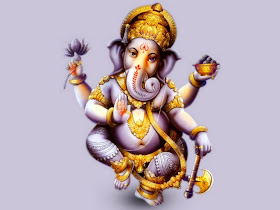Ashtavinayaka literally means "eight Ganeshas" in Sanskrit. Ganesha is the Hindu deity of obstacles, unity, prosperity and learning. The term refers to eight Ganeshas. Ashtavinayaka yatra refers to a pilgrimage to the eight Hindu temples in Maharashtra state of India that house eight distinct idols of Ganesha, in a pre-ascertained sequence.
Distance of Ashtavinayak temples from pune
On Pune - Solapur road
Pune - Theur (Shree Chintamani) 25 Kms
Pune - Siddhatek (Shree Siddhivinayak) 98 Kms
Pune - Moregaon (Shree Moreshwar) 64 Kms
On Pune - Nagar road
Pune - Ranjangaon (Shree Mahaganapati) 50 Kms
On Pune - Nashik road
Pune - Ozar (Shree Vighnahar) 85 Kms
Pune - Lenyandri (Shree Girijatmaj) 94 Kms
On Pune - Mumbai road
Pune - Mahad (Shree Varadavinayak) 83 Kms
Pune - Pali (Shree Ballaleshwar) 110 Kms
Ashtavinayak yatra as it should been done
According to Shastra you should take darshan in following order.
Day one: Start from Pune
1. The Moreshwar Temple, Moregaon (Pune-Hadaspsar-Loni-Chaufula-Supa-Moregaon)
2. The Siddhivinayak Temple, Siddhatek (Moregaon-Supa-Chaufula-Daund-Siddhatek)
3. The Ballaleshwar Temple, Pali (Siddhatek-Daund-Chaufula-Loni-Pune-Lonawala-Khopoli-Pali)
4. The Varadavinayak Temple, Mahad (Pali-Khopoli-Mahad)
Back to Pune (Mahad-Khopoli-Lonawala-Pune)
Day two:Start from Pune
5. The Chintamani Temple, Theur (Pune-Hadaspsar-Loni-Theur)
6. The Girijatmaj Temple, Lenyandri (Theur-(Nagar Road)Lonikand -Ranjangaon-Malthan-Ahemadabad Fata-Manchar-Narayangaon-Junnar-Lenyandri)
This road from Ranjangaon is exactly opposite the Mahaganapati Temple. You will take Mahaganapati darshan while coming back from Ozar.
7. The Vighnahar Temple, Ozar (Lenyandri-Ozar)
Bad road but not too far.
8. The Mahaganapati Temple, Ranjangaon (Narayangaon-Manchar-Ahemadabad Fata-Malthan-Ranjangaon)
again visit 1.The Moreshwar Temple, Moregaon to complete your Ashtavinayak Yatra.(Ranjangaon-Chaufula-Supa-Moregaon)
Back to Pune (Moregaon-Supa-Chaufula-Loni-Hadapsar-Pune)
Ashtavinayak yatra Shortest route from Pune
Day One: Start from Pune
1. The Chintamani Temple, Theur
2. The Moreshwar Temple, Moregaon
3. The Siddhivinayak Temple, Siddhatek
4. The Mahaganapati Temple, Ranjangaon
You can come back to Pune or Stay at Bhakta Niwas at Ranjangaon or Ozar
Day Two
5. The Vighnahar Temple, Ozar
6. The Girijatmaj Temple, Lenyandri
7. The Ballaleshwar Temple, Pali
8. The Varadavinayak Temple, Mahad
Back to Pune
Ashtavinayak yatra Shortest route from Mumbai
Day One: Start from Mumbai
1. The Ballaleshwar Temple, Pali
2. The Varadavinayak Temple, Mahad
3. The Girijatmaj Temple, Lenyandri
4. The Vighnahar Temple, Ozar
Stay at bhakt niwas at Ozar. Soon VIP bhakta niwas will start at Ozar
Day Two:Start from Ozar
5. The Mahaganapati Temple, Ranjangaon
6. The Siddhivinayak Temple, Siddhatek
7. The Moreshwar Temple, Moregaon
8. The Chintamani Temple, Theur
Back to Mumbai




















































